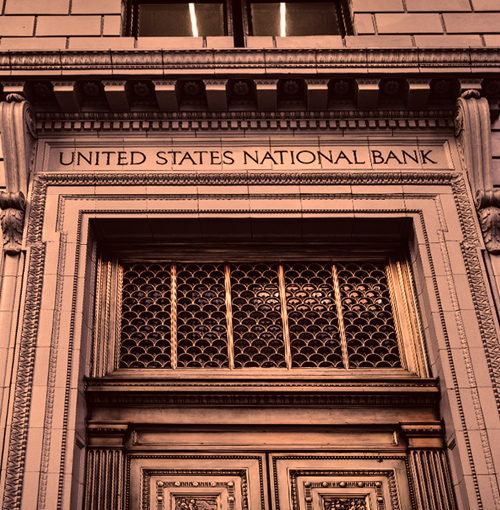
The Smoot-Hawley Tariff Act: Understanding its Role in the Great Depression
Delve into the intricate history and consequences of the Smoot-Hawley Tariff Act of 1930. This comprehensive guide will help you understand why this legislation, aimed at protecting U.S. industries from foreign competition, is widely regarded as a contributing factor in exacerbating the Great Depression. You will learn about the global reactions to the act, the political response within the U.S., and the subsequent policy shifts that were instrumental in shaping the future of international trade.
Unveiling the Smoot-Hawley Tariff Act: A Tale of Protectionism and Global Trade Disruptions
The Smoot-Hawley Tariff Act, a U.S. legislative initiative from 1930, aimed to shield American businesses from the onslaught of foreign competition by amplifying import tariffs. The fallout of this legislation, however, is often associated with the intensification of the global economic crisis known as the Great Depression.
Conventionally recognized as the Smoot-Hawley Tariff Act, this statute, initially designated as the United States Tariff Act of 1930, was the brainchild of Sen. Reed Owen Smoot and Rep. Willis Chatman Hawley.
Interesting Fact: Despite the opposition of over 1,000 economists, President Herbert Hoover signed the Smoot-Hawley Tariff Act into law in June 1930.
Primary Objectives of the Smoot-Hawley Act:
The primary aim of the Smoot-Hawley Act was to fortify U.S. agricultural and industrial sectors against foreign competitors by implementing a considerable rise in tariffs on imported goods. This substantial increment of roughly 20% was reciprocated by at least 25 other nations, raising their tariffs on U.S. products and subsequently causing a significant decline in global trade. This decline played a significant role in magnifying the detrimental effects of the Great Depression.
Enacted in mid-1930, the Smoot-Hawley Tariff Act substantially increased U.S. import duties, building upon the already elevated tariffs resulting from the Fordney-McCumber Act of 1922. The legislation initially sought to provide greater protection to U.S. farmers, who were grappling with the challenges of competing against cheaper agricultural imports, primarily from Europe. The outcry for protective measures extended beyond agriculture, with other industrial sectors joining the chorus for similar protective shields.
Remember: The Smoot-Hawley Act significantly increased tariffs on foreign imports to the U.S., which was met with similar increases from other countries.
The Great Crash of 1929: A Turning Point
The push for the legislation was initially thwarted by moderate Senate Republicans in early 1929. However, the tide turned following the stock market crash later that year. The economic catastrophe amplified protectionist and isolationist sentiments, paving the way for the passage of the bill. Although the bill faced a closely contested battle in the Senate, it smoothly passed through the House of Representatives.
Ignoring opposition from over 1,000 economists who petitioned for a veto, President Herbert Hoover signed the Smoot-Hawley Tariff Act into law in June 1930, a decision now considered among the most catastrophic in congressional history.
Important: The intent behind the Smoot-Hawley Tariff Act was to protect American businesses, especially farmers, from foreign competition.
Unintended Global Repercussions:
Contrary to Hoover's optimism, the increased tariffs under the Smoot-Hawley Act further stressed the already fragile global economies grappling with the fallout of the Great Depression and the aftermath of World War I. Germany, in particular, found itself ensnared in a vicious cycle of economic strain, as it struggled to repay war reparations while contending with declining exports due to the tariff hikes.
The world responded in kind to the U.S. tariff hikes, with around 25 nations increasing their tariffs, leading to a 66% plummet in international trade between 1929 and 1934.
Tip: In an interconnected global economy, actions of one country can cause ripple effects worldwide.
Shift in U.S. Tariff Policy:
The 1932 elections marked a turning point, as Franklin D. Roosevelt replaced Hoover as President and both Smoot and Hawley lost their seats. With a fresh mandate, Roosevelt initiated efforts to scale down the tariffs. In 1934, Congress passed the Reciprocal Trade Agreements Act, effectively handing tariff policy control over to the president and authorizing him to negotiate lower tariffs with foreign nations.
Over the subsequent decades, the U.S. continued to foster international trade, playing a leading role in the establishment of trade agreements such as the General Agreement on Tariffs and Trade (GATT), the North American Free Trade Agreement (NAFTA), and the World Trade Organization (WTO).
Important: The negative fallout from the Smoot-Hawley Tariff Act led to a significant shift in U.S. policy toward lower tariffs and increased international trade.
Interesting Fact: The Reciprocal Trade Agreements Act of 1934 shifted the authority for tariff policy to the White House, enabling the President to negotiate lower tariffs with foreign heads of state.
Debate over the Impact of Smoot-Hawley Act:
Economists remain divided over the extent to which the Smoot-Hawley Act exacerbated the Great Depression. While some argue that its impact was negligible, given that international trade was a relatively smaller part of the U.S. economy at that time, others contend that its indirect effects were far-reaching.
Remember: While some argue that the impact of the Smoot-Hawley Act was minor due to the smaller role of international trade in the U.S. economy at the time, others believe its effects were more substantial and indirect.
This article offers a deep dive into the Smoot-Hawley Tariff Act of 1930, its intent, the impact it had on global trade during the Great Depression, and the policy changes that followed in its aftermath. Despite the debate over its precise contribution to the economic hardships of the era, the act remains a testament to the potential pitfalls of protectionism and the importance of open, fair trade policies.
- Share this article





